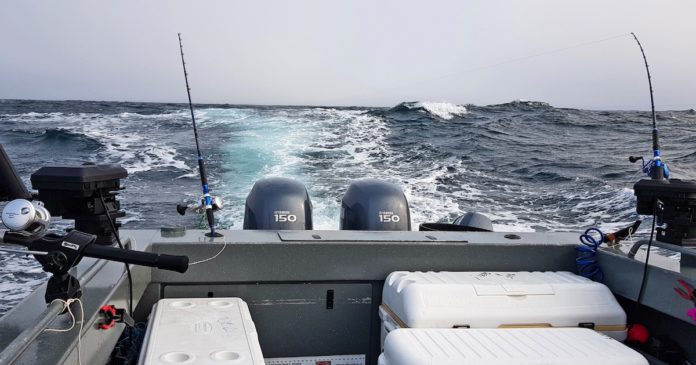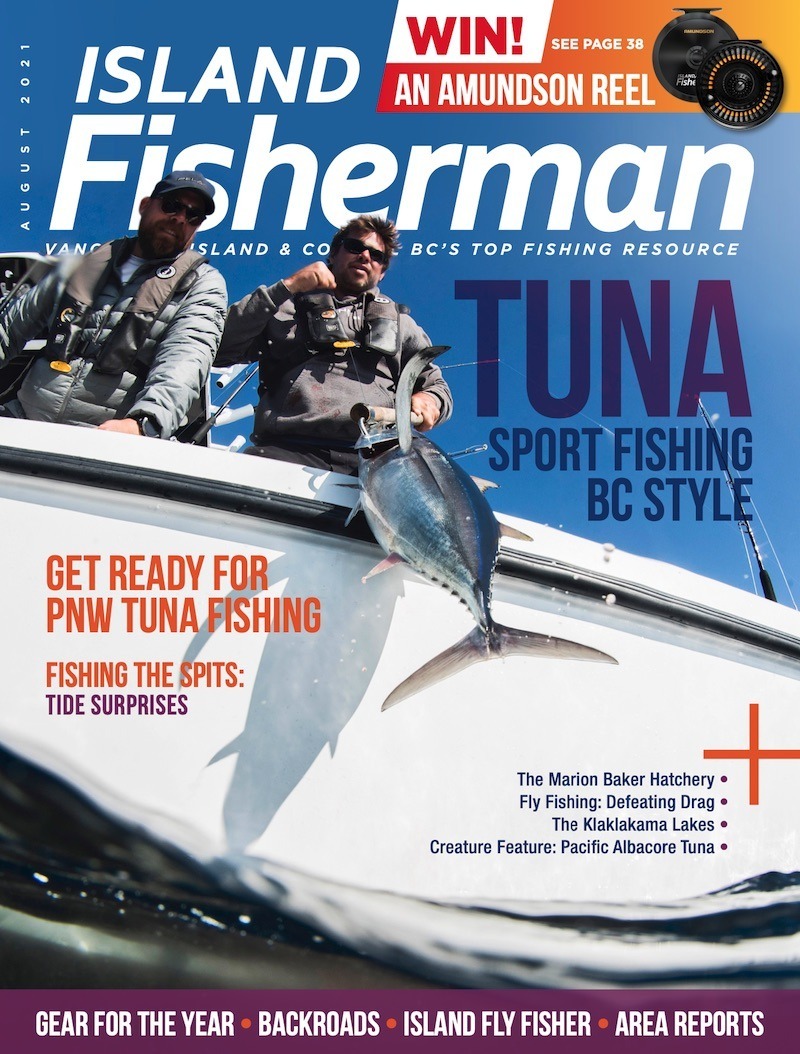Tuna fishing is extremely fun and rewarding. It’s not cheap, but if you haven’t tried it, you should plan a trip. Tuna fishing out on the open ocean is a team effort, and a good offshore
trip is all in the trip planning and safety preparation.
If you are not comfortable going out tuna fishing in your boat the first time, follow your gut and don’t do it. Find a guide that does tuna fishing and learn from them first before heading out. If you do want to head out for tuna, here are some tips on how to prepare. Click here for an additional in-depth article on tuna fishing in BC.
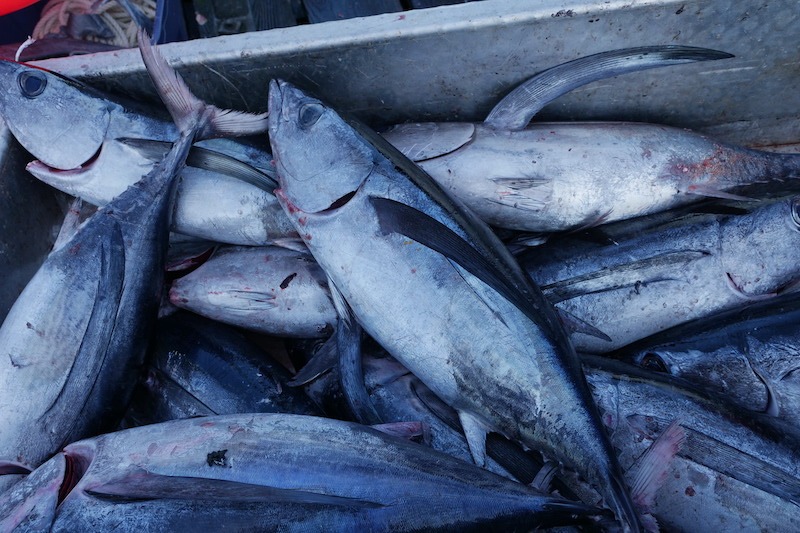
Tuna Fishing Boats
Obviously, you need a decent-sized boat to travel out there safely. A boat designed for offshore fishing is a must, with a deep-V hull to cut through waves and handle the big swells. The boat must have some weight to help handle the offshore waves.

You want to have enough fuel capacity to travel out offshore and back to dock with a reserve of 1/3 tank leftover. I have seen a 23′ fibreglass boat with twin main engines going offshore for tuna, and it’s my opinion (not necessarily that of Island Fisherman magazine) that is the absolute minimum size boat for the Pacific Northwest. Make sure you know your boat operating capabilities and fuel consumption (electronic fuel gauge and flow sensors are very helpful in making accurate calculations) before going offshore.
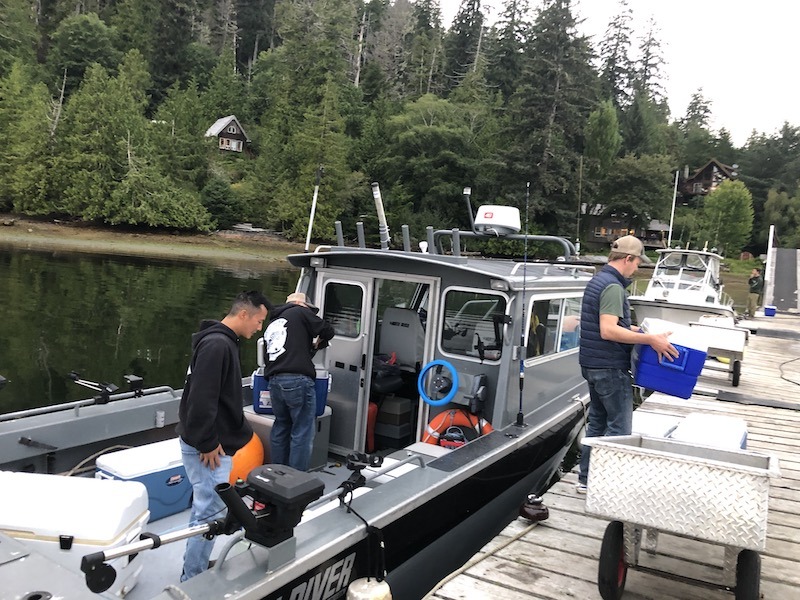
Tuna Fishing Safety Equipment
Offshore, you will have limited help during any emergency. You need your typical boat safety gear (first aid kit, man overboard [MOB] kit, energy boost snacks, flashlight, whistle, flares, and backup air horn). It is important to make a trip plan before leaving the dock. Make sure someone on shore has all the details—where you will be fishing, how far offshore, and estimated time back onto land or in mobile range (normally 20 nm from land).
Marine VHF mobile radios generally have a maximum range of 10 nm, with better VHF systems reaching up to 20 nm. It is always better to have a spare handheld VHF radio or even a spare mobile radio in case your main radio fails. For offshore fishing, it is wise to have an emergency position indicating radio beacon (EPIRB) or Spot when you don’t know if anyone else is out there. These devices operate by satellite, which means you are not limited to VHF radio range for requesting assistance.

These devices are worth the extra cost, especially for going offshore.
Go Tuna Fishing With Other Boats
It is also wise to use the buddy system. Go offshore with a group of boats— multiple boats around can assist each other in distress or even help relay a radio message to land for assistance. Heck, just seeing another boat offshore makes you feel happy that you are not alone out there.
Tuna Fishing Gear
As for gear, you can use any medium-heavy to extra-heavy rod for tuna fishing. If you have a halibut rod and reel, that is all you need for tuna fishing. For tuna trolling, you’ll want a 6′ to 8′ rod rated for 30- to 80-lb mono and a reel with plenty of line capacity, like a Shimano TLD-30 or Avet 6.3. Spool the reel with 60- to 100-lb braided line tied to a 150-lb snap swivel. You can also use heavy action spinning reels for tuna fishing. Line capacity and good smooth drag (15 lbs or more) are the key.
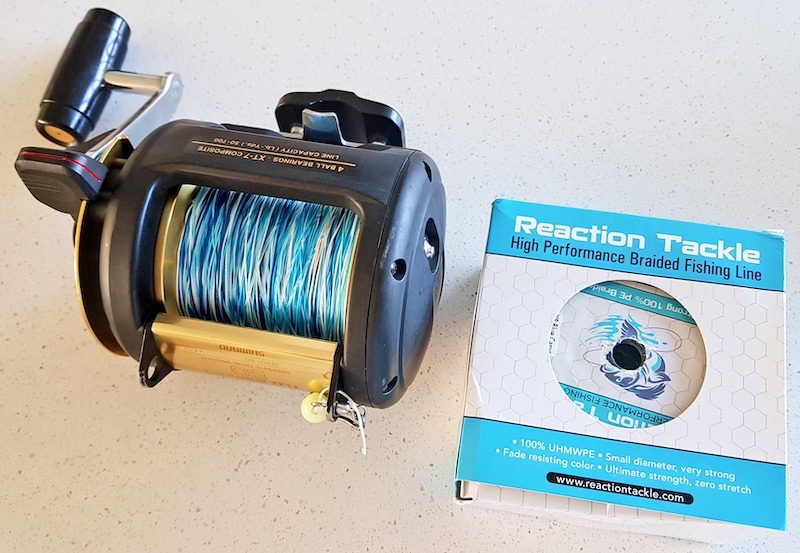
Trolling for Tuna
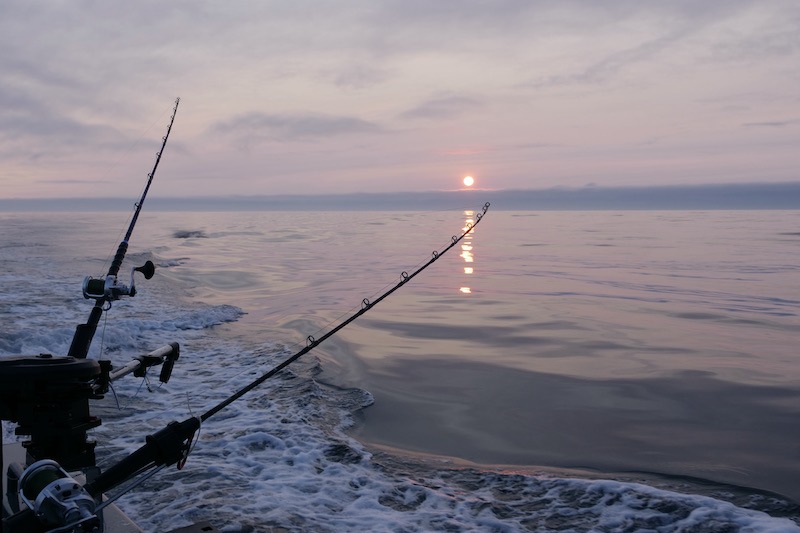
You can use many kinds of lures, from top water to deep water. Let’s start with top water trolling lures. Since we are trolling between 3 kts and 7 kts for tuna, many weighted lures act like a topwater lure—cedar plugs, Zukers, tuna feathers, 4-oz sand eel swimbait, tuna spreader bars, and giant weighted hoochies.
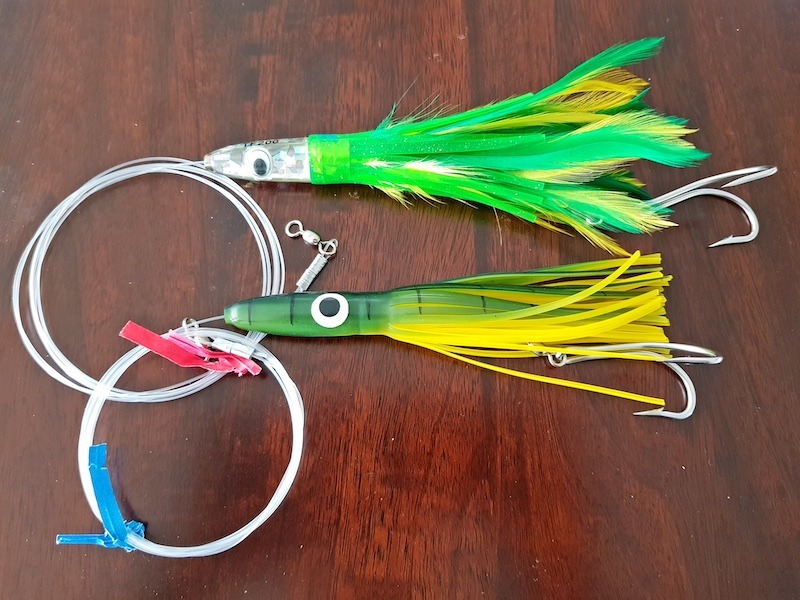
You can add a splash attractor (rabbit, dabo, planer board) to help get attention to your hoochie, Zuker, or cedar plug. Refer to the article Albacore Tuna Opportunities—West Coast Vancouver Island for in depth information about about the trolling setup for multiple rods, as well as other critical considerations about tuna fishing in British Columbia. For trolling lures at less than 20′ deep, we use Rapala 20′ or 30′ divers, Yo-Zuri divers, and diver boards with Zukers.
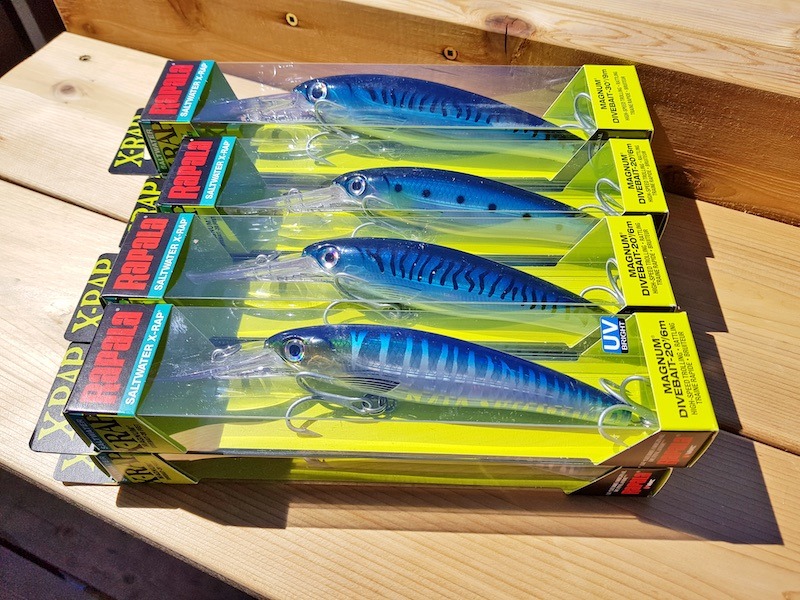
Find diver lures that match the common baitfish around your area—herring, anchovy, sand eel, sardine, or mackerel.
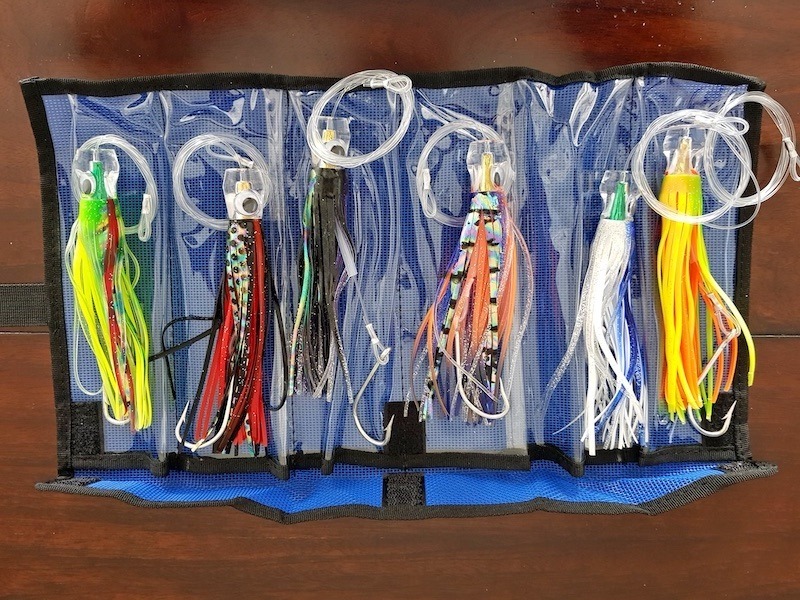
Jigging For Tuna
If you want to jig for tuna, you’ll need a couple jig shapes. Use butterfly and slow pitch jigs for the slow current situations, and needlefish and minnow jigs for 1-kt current and faster. Use jig weights from 3 oz to 16 oz depending how fast and how deep you are jigging; 5- to 7-oz jigs work pretty good out in the PNW ocean. If you find a school of tuna around, you might as well drop a butterfly jig or needlefish jig and just jig them up in various patterns, using the same type of rod and reel you use for lingcod or halibut jigging. Drop the jig down 100′ and work your way up to the top of the water. Watch your sounder for fish arcs and the the depths they are rising from. Sometimes they can be as deep as 300′. If you want to challenge yourself while there’s a school around you, use a 12-wt fly rod and cast a giant flashy baitfish fly pattern (sardine, needlefish, mackerel, herring, or anchovy) at them. Strip your fly back fast and add a couple of pauses; they will bite on the pause.
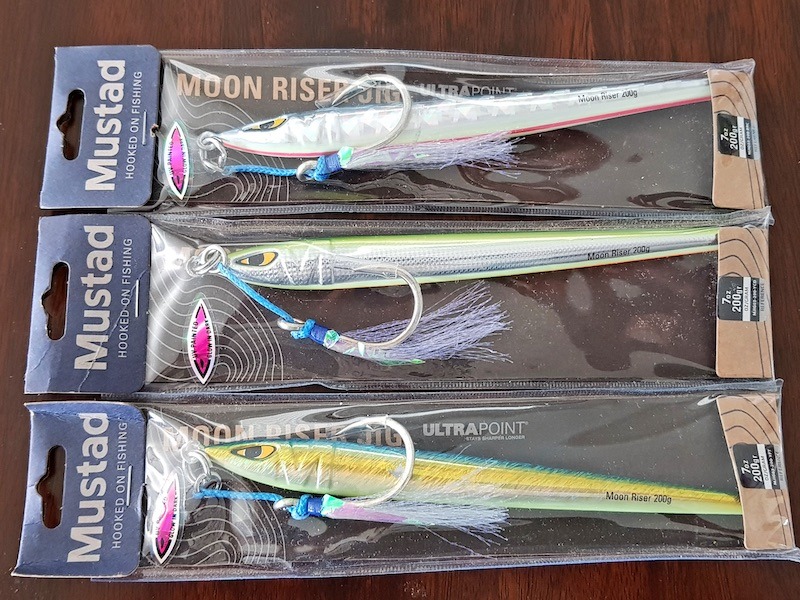
Finding Tuna To Fish
Now, how do you find tuna in the open water? First, you want to find the blue water. Typically, our ocean water color is green along the coast line and out to the edge of the canyons. Once you go past the canyon, then you see dark blue water. This is where you start to find tuna and other pelagic fish. After you find blue water, you want to look for warmer water and marine life such as birds, dolphins, and surfacing tuna. Typically, you’ll be looking for water temperatures from 16° to 18° C (60° to 64° F). Once you find marine life, start trolling for tuna and enjoy your time out in the open ocean. It’s all luck from there on out.
Keep Your Tuna On Ice
Finally, have as many coolers as you can carry in your boat safely while fishing offshore. You want to have big coolers filled with ice to keep your catch fresh. Having many coolers on board can challenge your boat’s balance, so take the time to prepare your boat before heading offshore. Tie the cooler down and make sure it doesn’t move when your boat gets pushed by waves or swells. I hope you get a chance in life to experience the fun of tuna fishing. It’s quite different from salmon fishing, and you’ll have the trip of a lifetime for sure.
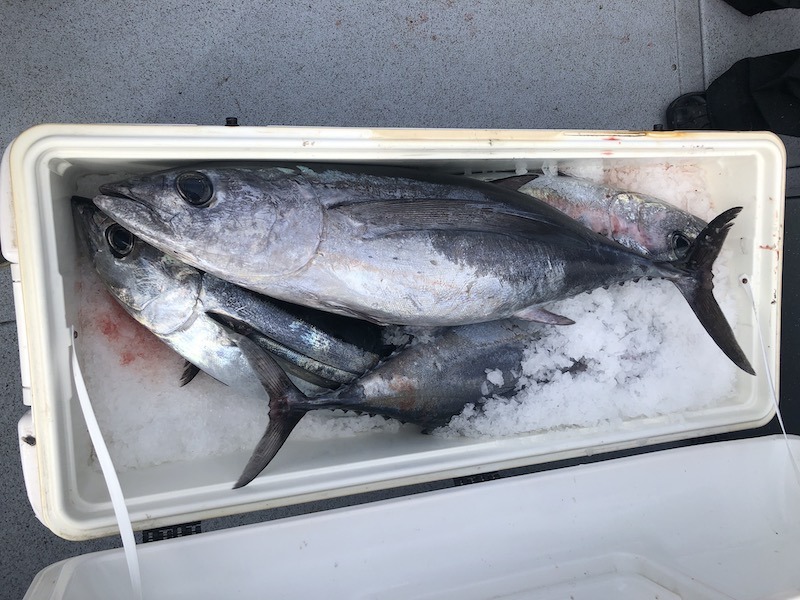
This article appeared in Island Fisherman magazine. Never miss another issue—subscribe today!


